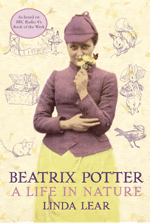in honour of World Book Day today, thousands of British readers were polled to find their Most Precious Reads - an imaginative choice of question to pose in a headline grabbing survey like this. It certainly gets people talking: as I try to write Rhianna and her dad are sitting in the family room behind me arguing over the top 100 list of Precious Reads I've just printed out.
My husband is spluttering over the inclusion of The Da Vinci Code. Rhianna at 12, is pleased that she has already got a handful of titles under her belt, although she doesn't share my enthusiasm for Anne of Green Gables which hits the list at #.46
[I adored Anne Shirley (with thanks due not just to the books, but to Kim Braden in the '70's TV adaptation who was the perfect, quintessential Anne.) My mother loved Anne's admonitory phrase 'There's scope for the imagination, Marilla', so much, she named her home Marilla Cottage; she did the imagining to my father's scoping!]
Here's the list - prefaced - because who could resist? - with a handful of my most precious reads. As soon as I log off, more will come to mind, but these will do for starters. Add yours in comments. And pay a visit to the World Book Day site, who, as part of the celebrations want your list of Top Ten Books You Just Can't Live Without.
These are My Most Precious:
Xinran Sky Burial
Barbara Kingsolver Small Wonders
Rose Tremain The Colour
Anne Tyler The Ladder of the Years
And the
Top 100 -
world book day – 1.3.2007
voted most precious reads
1 Pride and Prejudice Jane Austen
2 The Lord of the Rings JRR Tolkien
3 Jane Eyre Charlotte Bronte
4 Harry Potter series JK Rowling
5 To Kill a Mockingbird Harper Lee
6 The Bible
7 Wuthering Heights Emily Bronte
=8 Nineteen Eighty-Four George Orwell
=8 His Dark Materials Philip Pullman
10 Great Expectations Charles Dickens
11 Little Women Louisa M Alcott
12 Tess of the d'Urbervilles Thomas Hardy
13 Catch-22 Joseph Heller
14 Complete Works of Shakespeare William Shakespeare
15 Rebecca Daphne Du Maurier
16 The Hobbit JRR Tolkien
17 Birdsong Sebastian Faulks
18 Catcher in the Rye JD Salinger
19 The Time Traveler's Wife Audrey Niffenegger
20 Middlemarch George Eliot
21 Gone With The Wind Margaret Mitchell
22 The Great Gatsby F Scott Fitzgerald
23 Bleak House Charles Dickens
24 War and Peace Leo Tolstoy
25 The Hitch Hiker's Guide to the Galaxy Douglas Adams
26 Brideshead Revisited Evelyn Waugh
27 Crime and Punishment Fyodor Dostoyevsky
28 Grapes of Wrath John Steinbeck
29 Alice in Wonderland Lewis Carroll
30 The Wind in the Willows Kenneth Grahame
31 Anna Karenina Leo Tolstoy
32 David Copperfield Charles Dickens
33 Chronicles of Narnia CS Lewis
34 Emma Jane Austen
35 Persuasion Jane Austen
36 The Lion, The Witch and The Wardrobe CS Lewis
37 The Kite Runner Khaled Hosseini
38 Captain Corelli's Mandolin Louis de Bernières
39 Memoirs of a Geisha Arthur Golden
40 Winnie the Pooh AA Milne
41 Animal Farm George Orwell
42 The Da Vinci Code Dan Brown
43 One Hundred Years of Solitude Gabriel Garcia Marquez
44 A Prayer for Owen Meaney John Irving
45 The Woman in White Wilkie Collins
46 Anne of Green Gables LM Montgomery
47 Far From The Madding Crowd Thomas Hardy
48 The Handmaid's Tale Margaret Atwood
49 Lord of the Flies William Golding
50 Atonement Ian McEwan
51 Life of Pi Yann Martel
52 Dune Frank Herbert
53 Cold Comfort Farm Stella Gibbons
54 Sense and Sensibility Jane Austen
55 A Suitable Boy Vikram Seth
56 The Shadow of the Wind Carlos Ruiz Zafon
57 A Tale Of Two Cities Charles Dickens
58 Brave New World Aldous Huxley
59 The Curious Incident of the Dog in the Night-time Mark Haddon
60 Love In The Time Of Cholera Gabriel Garcia Marquez
61 Of Mice and Men John Steinbeck
62 Lolita Vladimir Nabokov
63 The Secret History Donna Tartt
64 The Lovely Bones Alice Sebold
65 Count of Monte Cristo Alexandre Dumas
66 On The Road Jack Kerouac
67 Jude the Obscure Thomas Hardy
68 Bridget Jones's Diary Helen Fielding
69 Midnight's Children Salman Rushdie
70 Moby Dick Herman Melville
71 Oliver Twist Charles Dickens
72 Dracula Bram Stoker
73 The Secret Garden Frances Hodgson Burnett
74 Notes From A Small Island Bill Bryson
75 Ulysses James Joyce
76 The Bell Jar Sylvia Plath
77 Swallows and Amazons Arthur Ransome
78 Germinal Emile Zola
79 Vanity Fair William Makepeace Thackeray
80 Possession AS Byatt
81 A Christmas Carol Charles Dickens
82 Cloud Atlas David Mitchell
83 The Color Purple Alice Walker
84 The Remains of the Day Kazuo Ishiguro
85 Madame Bovary Gustave Flaubert
86 A Fine Balance Rohinton Mistry
87 Charlotte's Web EB White
88 The Five People You Meet In Heaven Mitch Alborn
89 Adventures of Sherlock Holmes Sir Arthur Conan Doyle
90 The Faraway Tree Collection Enid Blyton
91 Heart of Darkness Joseph Conrad
92 The Little Prince Antoine de Saint-Exupery
93 The Wasp Factory Iain Banks
94 Watership Down Richard Adams
95 A Confederacy of Dunces John Kennedy Toole
96 A Town Like Alice Nevil Shute
97 The Three Musketeers Alexandre Dumas
98 Hamlet William Shakespeare
99 Charlie and the Chocolate Factory Roald Dahl
100 Les Misérables Victor Hugo
The choices I don't get are few - but include The Da Vinci Code and Bridget Jones's Diary.
I'm so pleased to see To Kill a Mockingbird riding high; it was a set text at school and I don't suppose I've reread it since I was teenager, but its characters & images have certainly been a part of me for many years. Jane Austen I came late to; but now treasure. (Although I still really don't like Emma.)
Do add yours most precious, and your comments on favourites and surprises in this list.



































